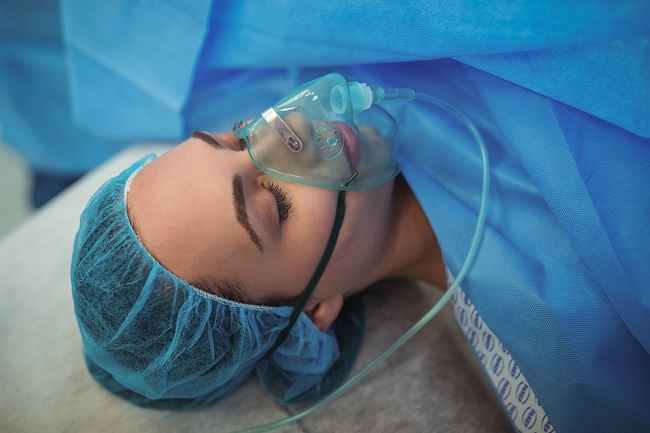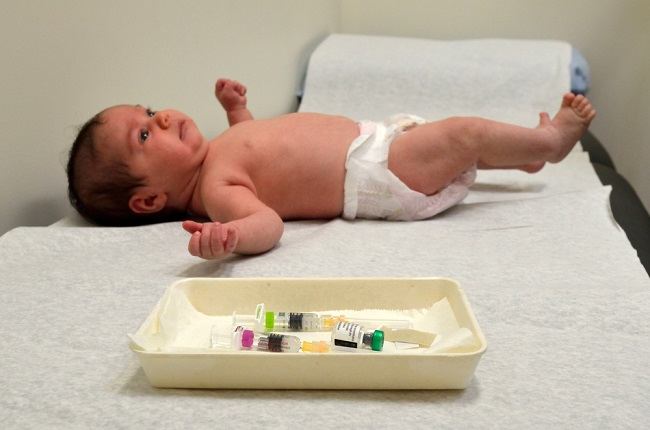Amputation is the loss or breakage of a body part, such as a finger, arm, or leg. Amputation can occur as a result of an accident or a procedure to cut a certain body part to treat a condition or disease.
Amputation due to injury can be partial or complete. Partial amputation means that some or some of the soft tissue is still connected, so that the patient's body part is not completely cut off. Meanwhile, in total amputation, the patient's organs are completely cut off.

In both partial and total amputations, the possibility of the severed body part being reattached or not, depends on the severity of the injury. If the severed body part cannot be reattached, the patient will be advised to use a prosthetic organ or prosthesis.
Amputation is a procedure where body parts are cut to prevent more dangerous conditions, such as the spread of infection and cancer, or if there is dead body tissue in the organ to be cut.
Causes of Amputation
Amputations can occur as a result of an unintentional severe injury, or they can be planned by a doctor to treat a number of ailments. Here is the explanation:
Amputation due to injury
This injury can occur due to a number of conditions such as the following:
- Natural disasters, for example being hit by a building collapse during an earthquake
- Beast attack
- Motor vehicle accident
- Accidents due to work involving heavy machinery or equipment
- Gunshot or explosion wounds from war or terrorist attacks
- Severe burns
Amputation due to illness
Many diseases can make a person have to undergo an amputation procedure, including:
- Thickening of the nerve tissue (neuroma)
- Frostbite, or injury from exposure to extreme cold
- Infections that can no longer be treated, for example in cases of osteomyelitis or necrotizing fasciitis the worst
- Cancer that has spread to bones, muscles, nerves or blood vessels
- Tissue death (gangrene), for example from peripheral arterial disease or diabetic neuropathy
Amputation Symptoms
Symptoms of amputation that can be experienced, especially in amputations due to injury, include:
- Pain, which is not always proportional to the severity of the injury or bleeding
- Bleeding, the severity of which depends on the location and type of injury
- Body tissue is damaged or crushed, but some tissue is still connected to muscles, bones, joints, or skin
When to go to the doctor
Get regular check-ups with your doctor if you have a disease that could lead to an amputation, if not treated properly, such as diabetes or peripheral artery disease.
For those of you who have undergone an amputation procedure, check with your doctor regularly. In addition to undergoing rehabilitation therapy that will improve your ability to carry out activities, regular check-ups to the doctor also aim to prevent and detect complications that may arise after amputation.
Call your doctor immediately if you experience any of the following symptoms after the amputation:
- Stitches in open amputation
- Pain in the amputation area or its surroundings
- Fever or chills
- Swelling, redness or bleeding at the amputation area
- Discharge of fluid, blood, or pus from the amputation area
Amputation Treatment
In some cases, the severed body parts can be put back together again by a replantation procedure. But beforehand, the doctor will first determine the severity of the injury and the patient's psychological condition.
Replantation is performed when the body part to be reattached is not badly damaged and is expected to function properly after the replantation is performed. But if these two factors are not met, then replantation will not be carried out.
For patients who cannot undergo replantation, the patient will be advised to use a prosthesis or prosthetic organ. In some cases, the prosthesis can replace the function of the missing body part properly.
Recovery after amputation
Permanent loss of limbs due to amputation can reduce self-confidence and of course the patient's ability to carry out activities. To deal with this problem, the doctor will recommend the patient undergo regular physical rehabilitation.
The rehabilitation carried out includes:
- Exercises to increase muscle strength
- Exercises to improve motor skills, so that patients can carry out activities independently
- Treatment and care to support recovery and relieve pain that appears in the amputation area
- Psychological therapy to overcome emotional disturbances that may be experienced by patients due to organ loss
- Use of assistive devices, such as wheelchairs and crutches
Amputation Complications
There are several complications that may occur after amputation, namely:
- Painful
- Bleeding
- Infection
- Difficulty moving joints near missing organs
- Phantom limb, namely the sensation of pain that appears in the missing organs
- Mental disorders, such as post-traumatic stress disorder (PTSD), irritability, depression, and suicidal thoughts
- Deep vein thrombosis (DVT)
Amputation Prevention
Amputation due to injury usually occurs suddenly and unexpectedly, making it difficult to prevent. While the way to prevent amputation due to disease is to prevent the occurrence of the disease.
Some ways that can be done to avoid amputation are:
- Prevent ulcers on your feet if you have diabetes, as ulcers can increase the risk of amputation.
- Use personal protective equipment, both while driving and working, especially if your job involves the use of heavy equipment.









